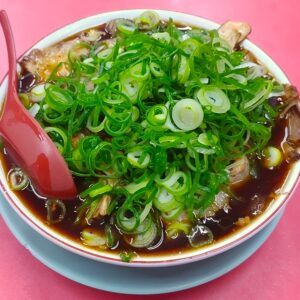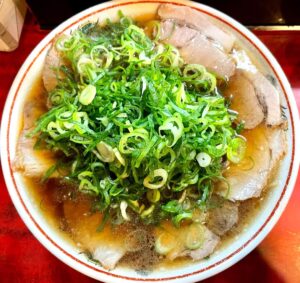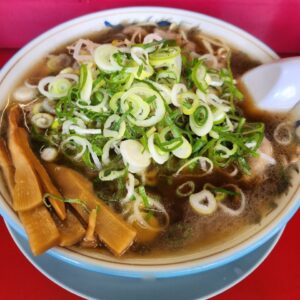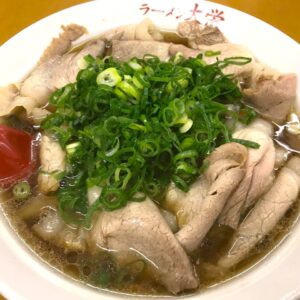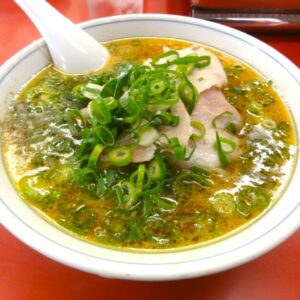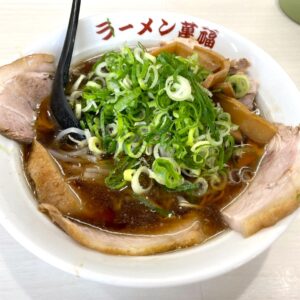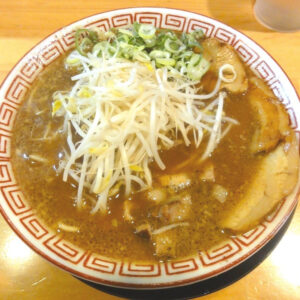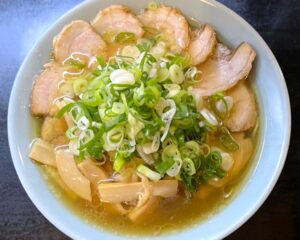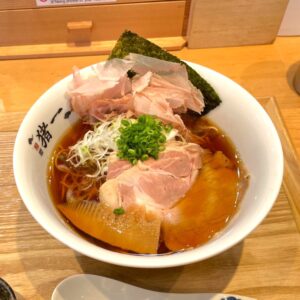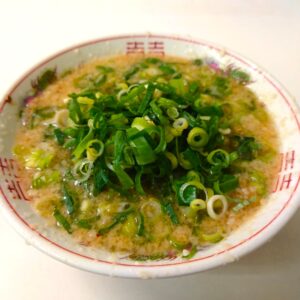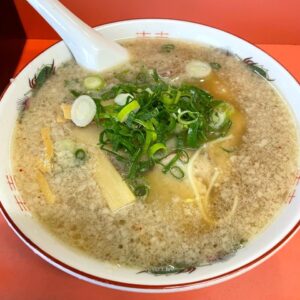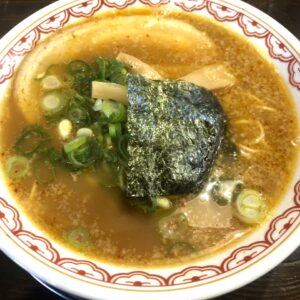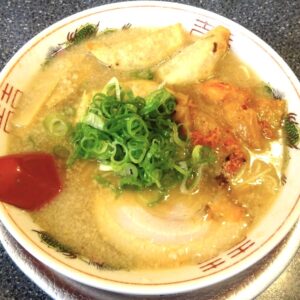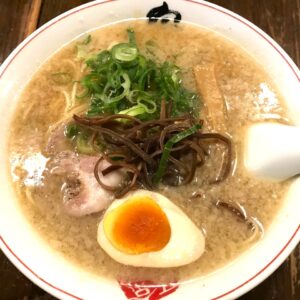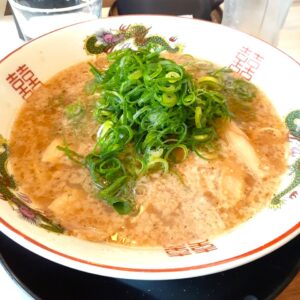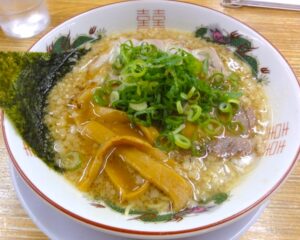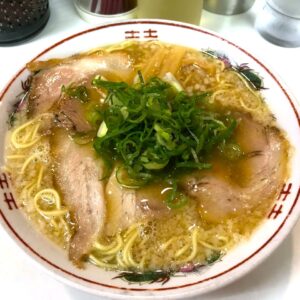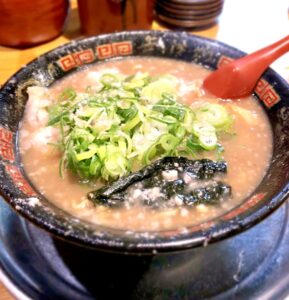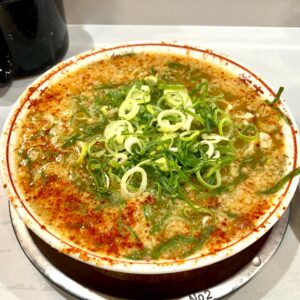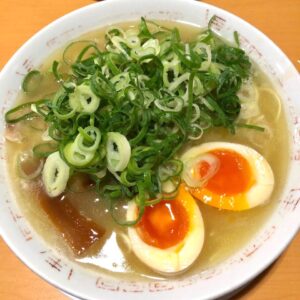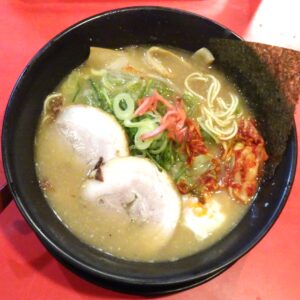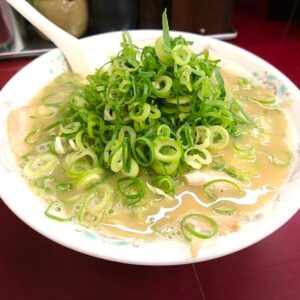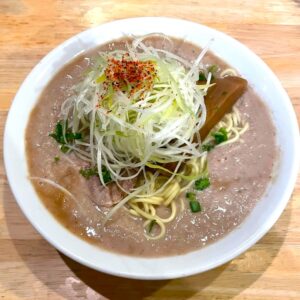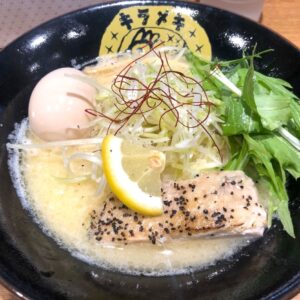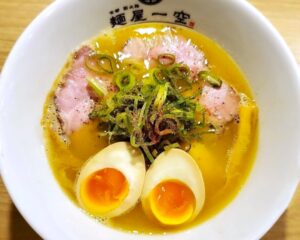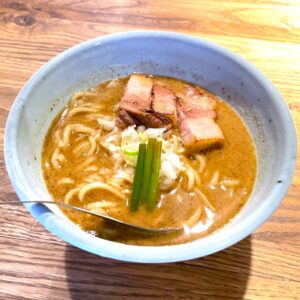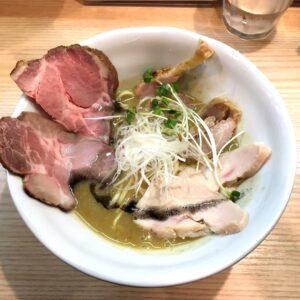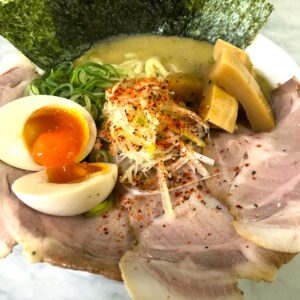Kyoto Ramen (Kyoto Pref.)
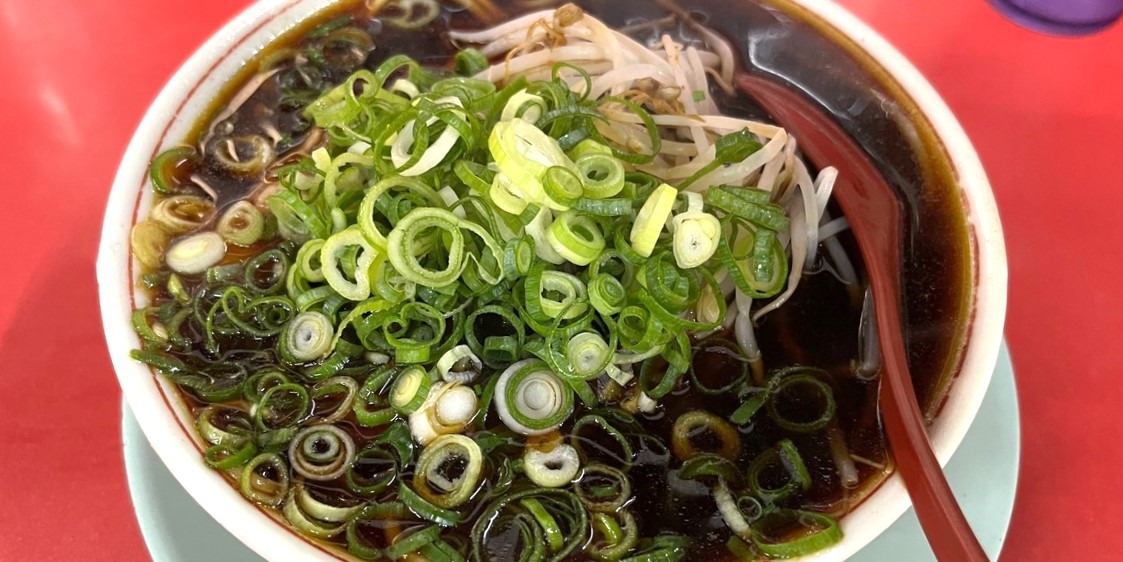
What is Kyoto Ramen(京都ラーメン)?
It is a general term for ramen served and consumed mainly in Kyoto City, Kyoto Prefecture, and ramen that originated in Kyoto.
The lineage is said to be roughly divided into 3 types, and they are as follows.
●Rich colored soy sauce ramen using pork bones and pork stock (あっさり系 Assari Kei; light taste clear soup type)
●Ramen with pork-backfat floating in a soup mainly made from chicken bones (背脂チャッチャ系 Se Abura Chaccha Kei; pork-backfat sprinkle type)…backfat soy sauce or backfat tonkotsu
●Chicken cloudy soup ramen (こってり系 Kotteri Kei; rich thick taste type)
The reality is that there are many things that have come in from other areas outside of Kyoto, and things that come from different genres, so the reality is that the situation is complicated. Such as Kyushu ramen, salt ramen, and Chinese soba noodles, Tokyo style ramen, have also entered the market.
The “Kyoto-style ramen” that arose in the Tokyo metropolitan area was invented as “Japanese-style ramen”, a type of ramen with Japanese-style soup stock, thin noodles, and a light soy sauce flavor inspired by Kyoto cuisine. However, in reality, bland ramen is considered to be a minority in Kyoto.
Features
For a while, something called “Kyoto-style Ramen(京風ラーメン)” appeared in the Tokyo metropolitan area. It is a commercially based, Japanese-style, and light ramen that is inspired by Kyoto, and is by no means a “Kyoto” ramen. Kyoto’s ramen is actually quite thick and rich, if anything, a lot of it is on the heavy side.
When you think of “Kyoto,” the first thing that comes to mind is “Tenka Ippin” (天下一品 founded in 1981,230 over shops’ mega ramen group). That thick soup is made with chicken bones instead of pork bones, and is made from several different ingredients. It even became a hot topic among ramen freaks trying to figure out what was really in it. I don’t really understand the details, but I was surprised by the gel-like soup. Nowadays, I can eat it without any problem, but when we first met, I couldn’t close my mouth. When you lift the noodles, most of the soup will stick to them. I don’t mean to say that they are connected or anything like that. There was a time when people used to say that whether or not you could stick your chopsticks to the ramen was the deciding factor in its deliciousness. Recently, the composition of soup ingredients seems to have changed compared to the past, so you may not be able to stand up to it with chopsticks. This ramen originated in Kyoto and has taken the nation by storm. There seem to be over 200 of them. (230 shops as of 2023)
The next most famous shop in terms of history and popularity is Shinpuku Saikan (新福菜館 founded in 1938). The main shop is located next to Daiichi Asahi (第一旭 founded in 1947) under an overpass near Kyoto Station, and both shops are open from morning, making them convenient for people who want to eat ramen early in the morning. “Shinpuku Saikan” opened at the Shin-Yokohama Ramen Museum and suddenly became popular nationwide, but it was originally a long-established and popular shop in Kyoto.
The distinctive feature is the soy sauce soup, which is so black that you might think it’s too strong. The noodles are uniquely round, thick and chewy. The toppings include several pieces of thinly sliced chashu. Due to its uniqueness, it hasn’t spread to other shops that much, but it is definitely one of the representative Kyoto ramen shops.
“Masutani” (ますたに founded in 1949) is probably as popular as these two shops. This ramen is made with a soy sauce-flavored chicken bone base and topped with pork backfat, and it started operating about 10 years earlier than Tokyo’s backfat chacha(sprinkling) type. There is also the branch shops with the same name in Tokyo. If you compare both, you will understand that the taste is quite different. The ramen is so well made that I think it might be better to serve it under a different shop name.
Now, regarding “Masutani” in Kyoto, it seems to have had a considerable influence on other ramen shops in Kyoto. There are many of these types in Kyoto, including Hosokawa(ほそかわ). It seems to be more or less an imitation or influence of “Masutani”. The popular “Yonaki-ya(夜鳴きや)” was founded by himself, but his favorite shop was “Masutani”.
Now, these three patterns have been the major trends in the Kyoto ramen world for a long time. However, a new wave is also emerging in Kyoto. Probably, the representative of the east Kyoto with long lines is “Tonryu(東龍)”, and the representative of the west Kyoto is “Sugichiyo(杉千代)”.
“Sugichiyo” has changed its flavor from when it first opened, and now it feels more like Kyoto ramen. Personally, I liked the previous taste, which had a unique flavor, but the current ramen is also more consistent. People start lining up before the shop opens, and the shop often opens earlier than its original opening time.
Tonryu Soba at “Tonryu” is a unique soup that you won’t find anywhere else. It’s yellowish, like vegetable potage. Apparently it’s that color because it contains squash… That’s not to say that he’s a “weird species.” I’ve never had it before, but it’s definitely ramen. And here’s another flavor. That’s Chinese noodles(中華そば). I don’t know which one is on the basic menu, but on the menu on the wall, “Tonryu Soba(東龍そば)” is on the far right, so I’m assuming that “Chuka Soba(中華そば; Chinese noodles)” is the second option. This looks like regular Chinese noodles. However, it is also quite popular. That’s probably why there are long lines at the shop. 20 to 30 people line up before the shop opens. The deep-fried chicken and side dishes are also popular items.
A new wind is currently blowing in Kyoto, where there have been few new and popular shops.
Ramen-Japan / Examples of Ramen Shops
Examples of the light taste Kyoto ramen shops
Examples of Kyoto ramen shops that uses pork back fat
Examples of the Kyoto ramen shops with rich chicken broth
Examples of the other popular ramen shops in Kyoto
-
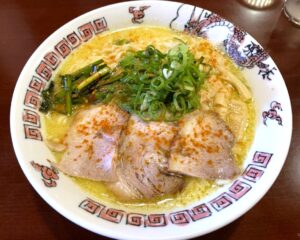
Tonryu Kitashirakawa Main Shop(東龍 北白川本店 / vegetable potage soup)
-
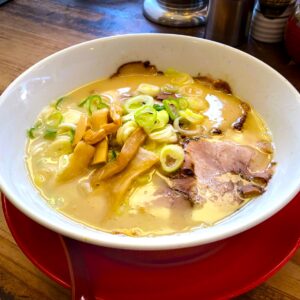
Chinese Noodle Takayasu (中華そば 高安 / “Suji ramen” with stewed beef tendon)
-
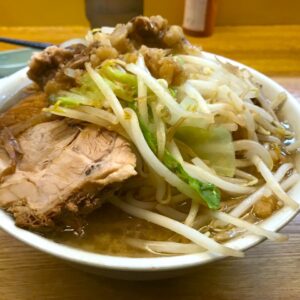
-
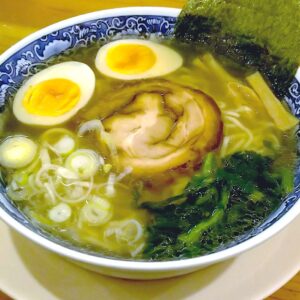
Shinjuku Menya Fuuka Main Shop (新宿めんや 風花本店 /Seafood Salt Tokyo Shinjuku Ramen)
-
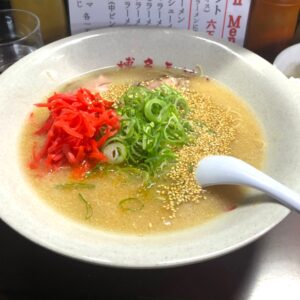
Hakata Nagahama Ramen Miyoshi (博多長浜らーめん みよし / Hakata style ramen)
-
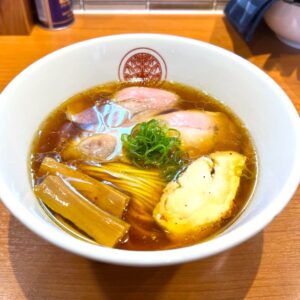
Examples of the Kyoto ramen shops with multiple shops
-
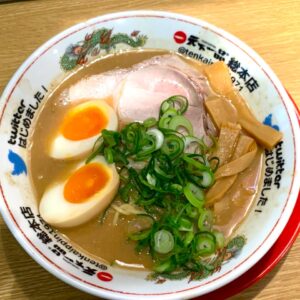
Tenkaichippin General Head Shop (天下一品 総本店 230 shops/light and rich chicken broth)
-
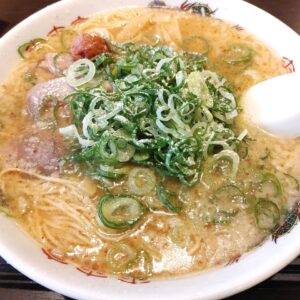
Rairaitei Yasu Main Shop (来来亭 野洲本店 245 shops/back fat chacha type)
-
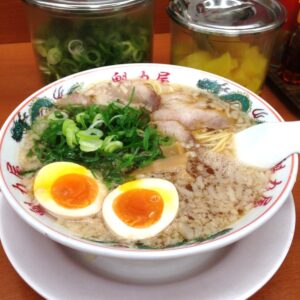
Kyoto Kitashirakawa Ramen Kairikiya (京都北白川ラーメン魁力屋 121 shops/all genres)
-
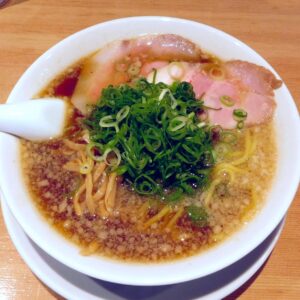
Kyoto Ramen Morii Inada Tsutsumi Main Store (京都ラーメン森井 稲田堤本店 14 shops/aged soy sauce)
-
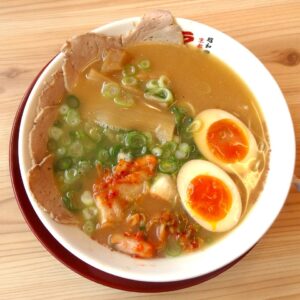
Ramen Yokozuna Kisshoin Main Shop (ラーメン横綱 吉祥院本店 47 shops/tonkotsu soy sauce flavor)
-

Examples of the Kyoto ramen shops available in other areas
-
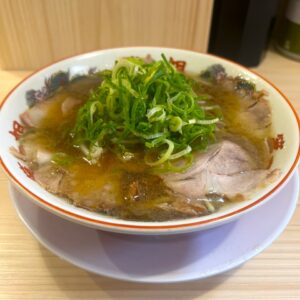
Honke Daiichi Asahi Shinjuku Shop (本家 第一旭 新宿店 Shinjuku Ward, Tokyo/Shinjuku Gyoen Sta.)
-
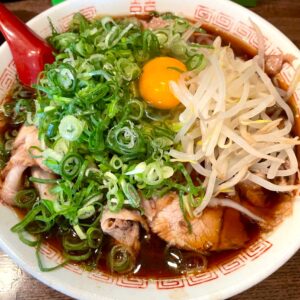
Shinpuku Saikan Azabujuban Shop (新福菜館 麻布十番店 Minato Ward, Tokyo/Azabujuban Sta.)
-
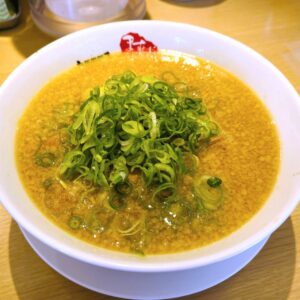
-
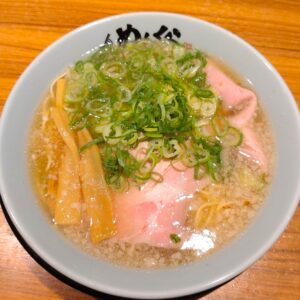
Kyoto Ramen Menkura (京都拉麺めんくら Shinagawa Ward, Tokyo/Aomono Yokocho Sta.)
-
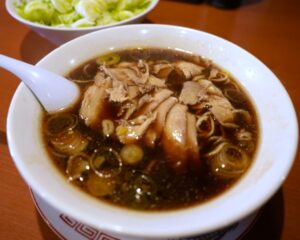
Suehiro Ramen Honpo Takadanobaba Branch (末廣ラーメン本舗 高田馬場分店 Shinjuku Ward, Tokyo/Takadanobaba Sta.)
-
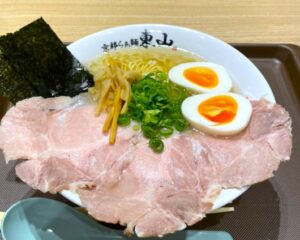
-


